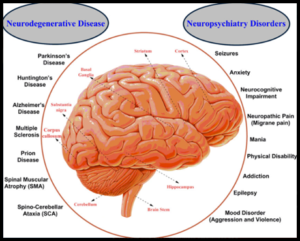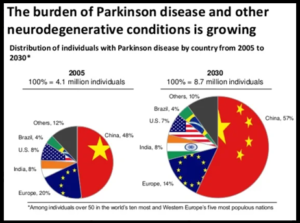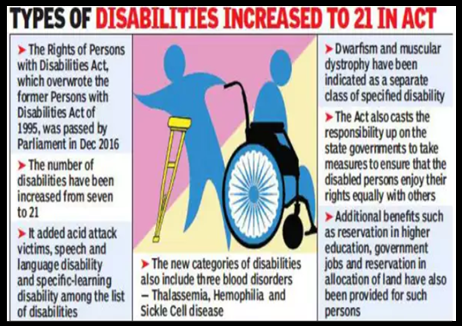A Call For Disability Inclusion That Must Be Heeded
Syllabus
- GS2: Issues Relating to Development and Management of Social Sector/Services relating to Health, Education, Human Resources.
Why in the News?
- Recently, the United Nations emphasized the importance of transformative solutions for inclusive development, addressing the needs of persons with disabilities.
- In the field of neuropsychiatry, innovative treatments offer potential improvements in daily activities and quality of life.
Source: Researchgate
Innovations for Enhanced Lives
International Day for Persons with Disabilities
- It has been a month since the commemoration of the International Day for Persons with Disabilities on December 3.
- Despite its passing, it is crucial to emphasize the significance of innovative solutions .
- These solutions aim at improving two key aspects for individuals—daily life activities and overall quality of life.
United Nations’ Call for Transformation
- The United Nations emphasizes the need for transformative solutions in inclusive development, ensuring that no one is left behind.
- This renewed focus highlights the significance of innovations that contribute to reducing disability.
Breakthroughs in Neuropsychiatry
- In the realm of neuropsychiatry, which explores the brain-mind interface, notable treatment innovations have emerged.
- These innovations hold substantial potential for enhancing outcomes and are the focal point of this article.
Understanding Neuropsychiatric Disorders
Broad Spectrum of Impact
- Neuropsychiatric disorders, inherently disabling, manifest throughout an individual’s life journey.
- This spectrum encompasses various conditions, from childhood to old age, significantly affecting global populations.
Childhood Challenges
- In childhood, prevalent disorders include autism, Attention-deficit/hyperactivity disorder (ADHD), and intellectual disabilities, impacting a substantial 317 million young individuals.
Adolescence to Adulthood Struggles
- Transitioning to adolescence and adulthood introduces mental health conditions, affecting 167 million adolescents and 970 million adults worldwide.
- Conditions range from anxiety, depression, and obsessive-compulsive disorder to addiction, schizophrenia, and bipolar disorder affect a significant population, totaling 1.14 billion globally.
Lifetime Impact
- Neuropsychiatric challenges persist across the lifespan, embracing traumatic brain injuries, spinal injuries, epilepsy, headaches, strokes, and neurodegenerative conditions like Alzheimer’s dementia and Parkinson’s disease.
- A staggering 276 million individuals globally are affected by these neurological conditions.
Source: WHO
Rehabilitation Gap: A Global Imperative
Overwhelming Demand
- The global burden of neuropsychiatric disorders underscores an extensive need for rehabilitation services.
- As per the World Health Organization’s 2019 Global Burden of Disease study, a staggering 41 billion individuals could benefit from rehabilitation, contributing to 310 million Years of Living with Disabilities (YLD).
- This number witnessed a 63% increase from 1990 to 2019.
Under-Resourced and Overlooked
- Despite the evident benefits for individuals and society, rehabilitation is often overlooked and under-resourced.
- Perceived as a service for a select few, it struggles to secure the priority it deserves in countries worldwide.
Source: Times Of India
Holistic Care Approach
Neuro-Psychiatric Continuum
- The interconnected nature of neurology and psychiatry demands a comprehensive approach to rehabilitation.
- Conditions in these realms often overlap, creating a continuum of needs.
- Instead of narrow, specialist-focused concepts, rehabilitation services should embrace a broader perspective.
Empowering the Community
- Promoting awareness is crucial. Many disabilities can be treated or even reversed.
- It’s essential for communities to understand that enduring disablement is not the only option, fostering a proactive attitude towards rehabilitation.
Recognizing Rehabilitation’s Vital Role
Professional Diversity for Holistic Care
- Rehabilitation extends beyond traditional medical roles.
- Physical therapists, occupational therapists, speech therapists, psychologists, and caregivers are integral.
- Encouraging their professional growth, providing training and establishing mainstream career opportunities are essential.
Multidisciplinary and Holistic Approach
- Modern rehabilitation services must adopt a comprehensive model.
- They should involve various professionals, utilize multiple components, and embrace a holistic perspective for effective and inclusive care across diverse healthcare needs.
Harnessing Scientific Breakthroughs for Care
Non-Invasive Brain Stimulation (NIBS)
- Revolutionary techniques like Repetitive Transcranial Magnetic Stimulation (rTMS) offer non-invasive solutions.
- Widely applicable, rTMS addresses depression, obsessive-compulsive disorder, Parkinson’s tremors, schizophrenia, addictions, pain management after strokes, traumatic brain injury, Autism Spectrum Disorder, and aggression.
Source: Times of India
Functional Magnetic Stimulation (FMS)
- Complementary to rTMS, FMS contributes to managing pain, spasticity, incontinence, and various disabling neurological symptoms.
- These advancements signify a transformative approach to neurological and mental health rehabilitation, showcasing the potential of modern science in enhancing patient outcomes.
Empowering the Mind: Innovative NIBS Techniques
Transcranial Electrical Stimulation (TES)
- Introducing transcranial electrical stimulation (TES), a promising NIBS technique.
- With sub-types like direct current, alternate current, and random noise, TES proves successful in enhancing memory, cognition, mood, behavior, anxiety, tremors, confusion, delirium, and sleep disorders.
- Its portability and bedside application add to its advantages.
Transcutaneous Auricular Vagus Nerve Stimulation (tA-VNS)
- Post-COVID-19, the significance of transcutaneous auricular vagus nerve stimulation (tA-VNS) emerges.
- Initially designed for epilepsy, it’s now under investigation for depression, migraine, and dysautonomia, addressing long COVID-19 symptoms related to vagus nerve abnormalities.
Creating Inclusive Solutions
Global Disability Inclusion
- In a world with a billion people facing disabilities, the United Nations emphasizes disability inclusion as a core aspect of the 2030 Agenda for Sustainable Development.
- With 80% of individuals with disabilities residing in developing countries, the need for inclusive solutions is paramount.
Collaboration for Equity
- In times of crisis, such as the COVID-19 pandemic, persons with disabilities often face exclusion.
- Collaborative efforts between governments, public and private sectors are essential to develop innovative solutions, fostering a more accessible and equitable world.
| Government of India’s initiatives for People with disability
Educational Empowerment · Scheme for Inclusive Education for Disabled at Secondary Stage (2009): it focuses on inclusive education for disabled students in Classes IX-XII, providing scholarships, teaching aids, teacher training, and infrastructural adjustments. · National Scholarship Scheme for Persons with Disabilities (NSPWD): Initiated in 1997, it offers scholarships across various educational levels, supporting financially challenged disabled students. Mental Health Support · Manas Scheme (2008): Providing comprehensive mental healthcare services, including access to professionals, counseling, medication, and community-based support. · National Institute of Mental Health and Neuro Sciences (NIMHANS) (1974): Dedicated to advancing research, training, and service delivery in mental health, contributing to improved standards across India. Employment Enhancement · Scheme for Vocational Rehabilitation of Persons with Disabilities (RVDP) (2003): Aims at vocational training, skill development, and placement assistance, fostering employment opportunities for persons with disabilities. · National Handicapped Finance and Development Corporation (NHFDC) (1997): Offers bank loans and subsidies for self-employment ventures, supporting financial independence. · Swabalamban Scheme (2006): Empowers persons with disabilities through entrepreneurship development training and microfinance assistance. Healthcare Assistance · Assistance to Disabled Persons for Purchase/Fitting of Aids and Appliances (ADIP) (1998): Provides financial aid for essential assistive devices, enhancing mobility and independence. · Rashtriya Arogya Nidhi (RAN) (2008): Offers financial assistance for critical illnesses, including disabilities, reducing the burden on families. Rehabilitation and Social Security · Swadhar Scheme (2016): Supports residential homes for senior citizens and persons with disabilities, ensuring a dignified living environment and access to basic amenities. · National Disability Pension Scheme (NDPS) (2001): Ensures monthly pensions for individuals with severe disabilities from low-income families, ensuring financial security. |
Source :
Mains Practice Question
Examine the current state of rehabilitation services for neurological and mental health disorders globally, considering the World Health Organization’s data on disability-related needs.

 Source: Researchgate
Source: Researchgate Source: WHO
Source: WHO Source: Times of India
Source: Times of India

